
仪器分析(汉英对照全国高职高专规划教材)
正版图书,可开发票,请放心购买。
¥ 24.34 7.4折 ¥ 33 全新
库存3件
广东广州
认证卖家担保交易快速发货售后保障
作者编者:李志红
出版社中国环境
ISBN9787511128539
出版时间2016-08
装帧其他
开本其他
定价33元
货号3643268
上书时间2023-09-02
- 店主推荐
- 最新上架
商品详情
- 品相描述:全新
- 商品描述
-
目录
中文导读:1 电位分析法
1.1 原理简介
1.2 能斯特方程的应用
1.3 离子选择电极
1.4 直接电位法
1.5 电位滴定法
1.6 电位滴定法的实验数据处理
1.7 电位测定相对误差评价
Chapter 1 Potentiometry
1.1 Introduction
1.2 Indicator Electrodes
1.3 Ion Selective Electrode(pH electrode)
1.3.1 Metallic Electrodes
1.3.2 Membrane Electrodes
1.3.3 Glass Membrane Electrodes
1.3.4 Crystalline Solid-State Electrodes
1.3.5 Liquid Membrane ISES
1.4 Analytical Applications of Potentiometry
1.4.1 Direct Measurement of an Ion Concentration
1.4.2 Potentiometric Titrations
1.4.3 pH Measurements
1.4.4 Errors in pH Measurement with Glass Electrodes
1.4.5 pH Titrations
1.4.6 Titrations of Weak Acids and Bases
1.5 Suggested Experiments
1.6 Problems
中文导读:2 紫外-可见分光光度法
2.1 相关知识
2.2 原理简介
2.3 分光光度计
Chapter 2 Ultraviolet and visible absorption spectroscopy
2.1 Introduction
2.2 Electromagic Radiation
2.2.1 What is Electromagic Radiation
2.2.2 UV-vis Spectmm
2.3 Molecules and Molecular Spectroscopy
2.3.1 Rotational Transitions in Molecules
2.3.2 Vibrational Transitions in Molecules
2.3.3 Electronic Transitions in Molecules
2.4 Lambert-Beer's law
2.4.1 Absorbance and Transmittance
2.4.2 Lambert-Beer's law
2.4.3 Deviations from Beer's Law
2.5 Instrumentation in the UV/Visible
2.5.1 Radiation Source
2.5.2 Wavelength Selection Device
2.5.3 Sample Holder
2.5.4 Detector
2.5.5 Single-Beam and Double-Beam Instruments
2.6 Quantitative analysis by absorption measurements
2.6.1 Procedural Details
2.6.2 Methods in Quantitative Analysis
2.6.3 Analysis of Mixtures of Absorbing Substances
2.7 Accuracy & precision in UV/VIS absorption spectrometry
2.8 Suggested Experiments
2.9 Problems
中文导读:3 原子吸收分光光度法
3.1 基本原理
3.2 原子吸收分光光度仪主要部件功能简介
Chapter 3 Atomic Absorption Spectroscopy
3.1 Introduction
3.2 Absorption of Radiant Energy by Atoms
3.2.1 Boltzmann Distribution
3.2.2 Measurements by Atomic Absorption
3.3 Instrumentation
3.3.1 Radiation Sollrces
3.3.2 Atomizers
3.3.3 Monochromator
3.3.4 Detectors
3.4 Correction of interfering absorptions
3.5 Analytical applications of AAS
3.5.1 Qualitative Analysis
3.5.2 Quantitative Analysis
3.6 Suggested Experiments
3.7 Problems
中文导读:4 气相色谱分析法
4.1 色谱法简介
4.2 基本原理
4.3 色谱法的分类
4.4 气相色谱仪及色谱流出曲线图
4.5 组分与固定相的作用
4.6 程序升温技术
4.7 色谱分离基础理论
4.8 衡量总体分离效果的指标——分离度R
Chapter 4 Gas chromatography
4.1 Introduction
4.2 Background in formation of chromatography
4.3 General concepts of analytical chromatography
4.4 The chromatogram
4.5 Retention parameters
4.5.1 Retention times
4.5.2 Retention volume(or elution volume)VR
4.5.3 Hold-up volume(or dead volume)VM
4.5.4 Retention(or capacity)factor k
4.6 Separation factor between two solutes
4.7 Resolution factor between two peaks
4.8 Techniques by physical state of mobile phase
4.8.1 Gas chromatography(GC)
4.8.2 Liquid chromatography(LC)
4.9 Essential theories of chromatography
4.9.1 The plate theory
4.9.2 The rate theory of chromatography
4.9.3 Golay's equation
4.10 Optimization of a chromatographic analysis
4.11 Gas chromatography
4.11.1 Components of a GC installation
4.11.2 Mobile Phase
4.11.3 Chromatographic Columns
4.11.4 Stationary Phases
4.11.5 Sample Introduction
4.11.6 Temperature Control
4.11.7 Detectors for Gas Chromatography
4.12 Quantitative Analysis
4.12.1 Analyses Based on Peak Height
4.12.2 Analyses Based on Peak Areas
4.12.3 Calibration and Standards
4.12.4 The Internal-Standard Method
4.12.5 The Area-Normalization Method
4.12.6 Quantitative Applications of GC
4.13 Qualitative Analysis
4.13.1 The Retention Index
4.13.2 Evaluation
4.13.3 GC Coupled with Spectroscopic Detection
4.14 Problems
中文导读:5 高效液相色谱分析法
5.1 高效液相色谱简介
5.2 高效液相色谱法与气相色谱法的比较
5.3 高效液相色谱主要类型
5.4 高效液相色谱仪
5.5 梯度洗脱技术
Chapter 5 High-performance liquid chromatography
5.1 Introduction
5.2 The beginnings of HPLC
5.3 General concept of an HPLC system
5.4 Pumps and gradient elution
5.4.1 Pumps
5.4.2 Low and high pressure gradients
5.7 Stationary Phases
5.9 Detectors for HPLC
5.10 Quantitative Applications
5.12 Evolution and applications of HPLC
5.13 Problems
中文导读:6 红外光谱法
6.1 基本原理
6.2 红外光谱仪及应用
Chapter 6 Infrared Spectroscopy
6.1 Introduction
6.2 IR Frequency Range and Spectrum Presentation
6.3 Theory OfInfrared Absorption
6.4 Group Frequencies
6.4.1 Aliphatic Hydrocarbons
6.4.2 Aromatic Compounds
6.4.3 Oxygen-Containing Compounds
6.4.4 Nitrogen-Containing Compounds
6.4.5 Halogen-Containing Compounds
6.5 Identification.
6.6 Experimental methods
6.6.1 Dispersive Infrared Spectrometers
6.6.2 Fourier-Transform Infrared Spectrometers
6.6.3 Transmission Methods
6.7 Problems
中文导读:7 质谱法
7.1 基本原理
7.2 仪器构造
7.3 谱图解析
7.4 色谱-质谱联用的应用
Chapter 7 Mass Spectrometry
7.1 Introdution
7.2 Sample introduction
7.2.1 Direct Vapor Inlet
7.2.2 Gas Chromatography
7.2.3 Liquid Chromatography
7.3 Ionization techniques
7.3.1 Electron Ionization
7.3.2 Chemical Ionization
7.3.3 Fast Atom Bombardment and Secondary Ion Mass Spectrometry
7.3.4 Atmospheric Pressure Ionization and Electrospray Ionization
7.4 Mass analyzers
7.4.1 Quadrupole
7.4.2 Magnetic Sector
7.4.3 Time-of-Flight
7.4.4 Quadrupole Ion Trap
7.4.5 Ion Cyclotron Resonance
7.5 Detectors
7.6 Vacuum System
7.7 Data System
7.8 Interpretation
7.8.1 Molecular Ion
7.8.2 Fragmentation
7.8.3 Isotope Abundance
7.8.4 Exact Mass
7.9 Problems
Reference
内容摘要
由李志红主编的《仪器分析(汉英对照全国高职高专规划教材)》一书是在“仪器分析”省级精品课程和省级双语示范课程建设的基础上,根据高职高专人才培养目标及课程特点编写的英汉双语教材。
本书共有7章,内容包含:电位分析法、紫外一
可见分光光度法、原子吸收分光光度法、气相色谱分析法、高效液相色谱分析法、红外光谱法、质谱法。
在编写过程中充分汲取了国外同类教材的最新内容,并结合国内现行教材的编写特点,采用“中文导读+难点译注”的方式,中文与英文在内容表述上相辅相成,方便读者全面地了解和掌握常见的仪器分析技术。在每章内容结束后还附有思考练习题,部分章节还给出了建议开设的实验,以帮助学生和教师对相关学习内容进行检查与巩固。
本书不仅可以作为高等专科学院、高等职业技术学院环境类专业的教材,还可以作为从事分析检测工作的技术人员的参考用书。
相关推荐
— 没有更多了 —


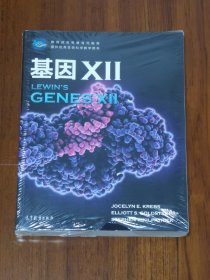
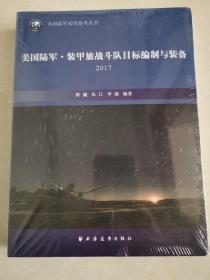
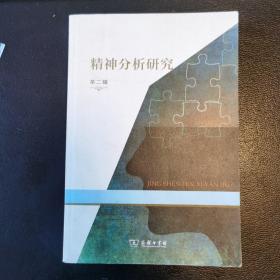

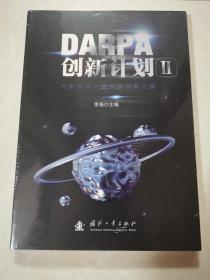


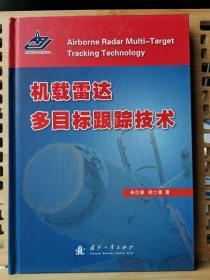
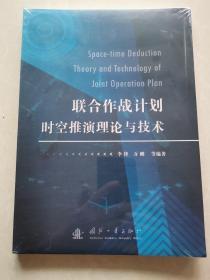














以下为对购买帮助不大的评价